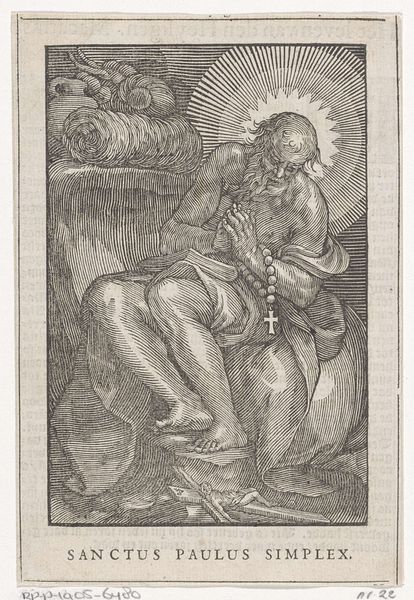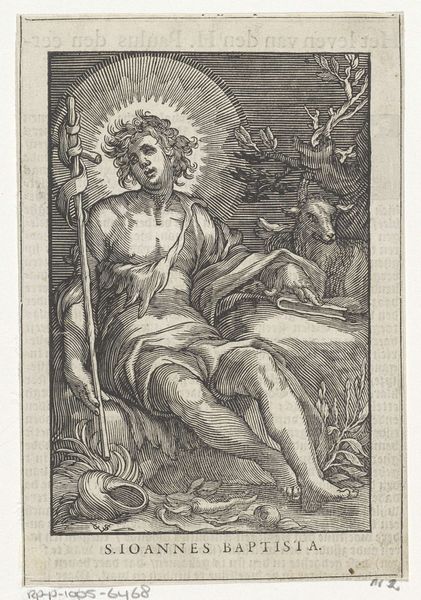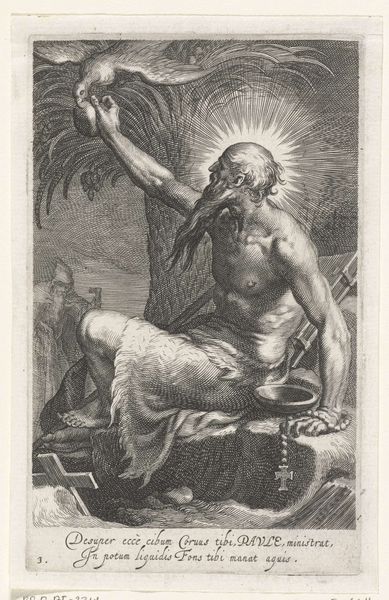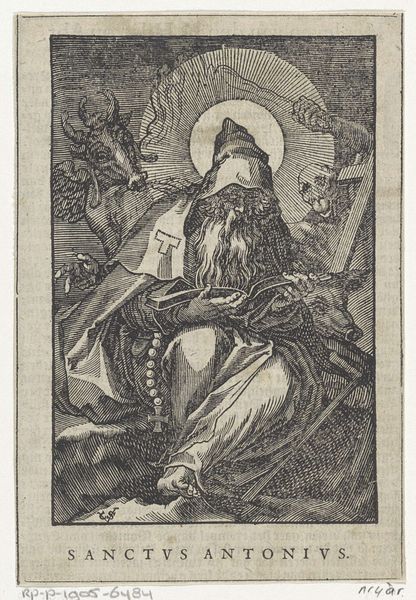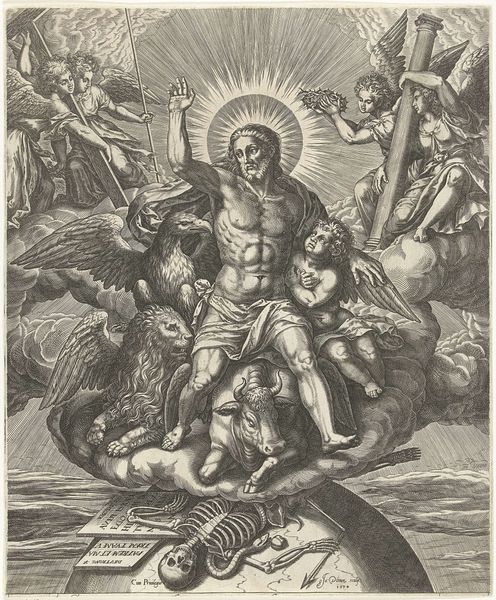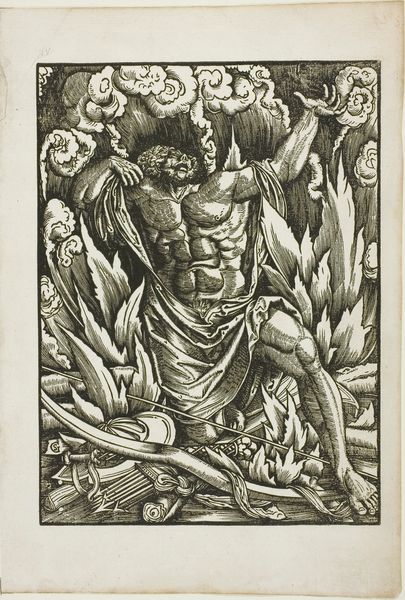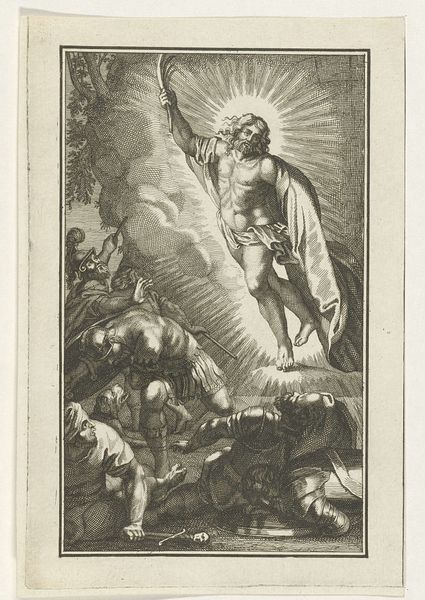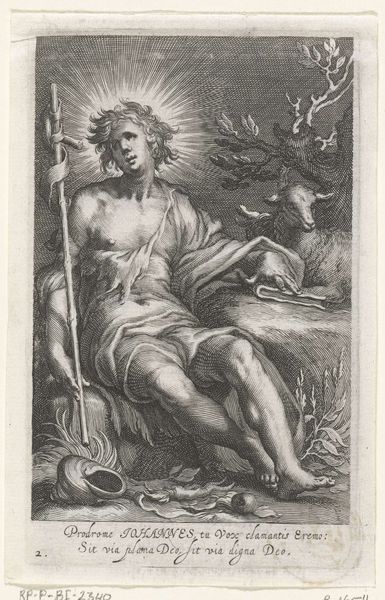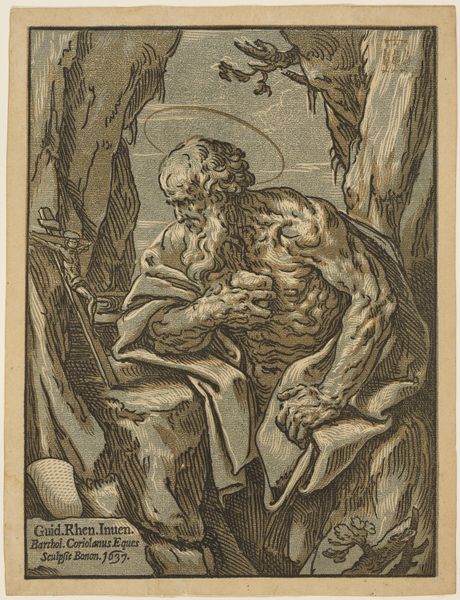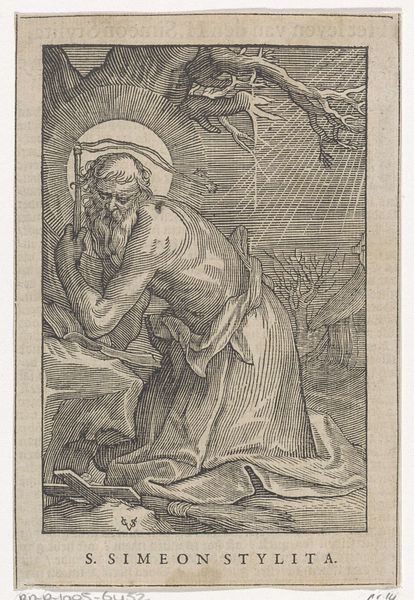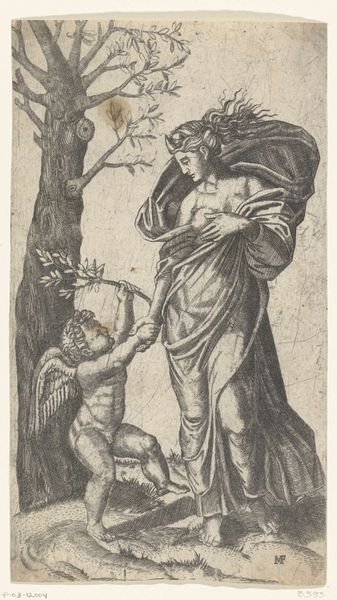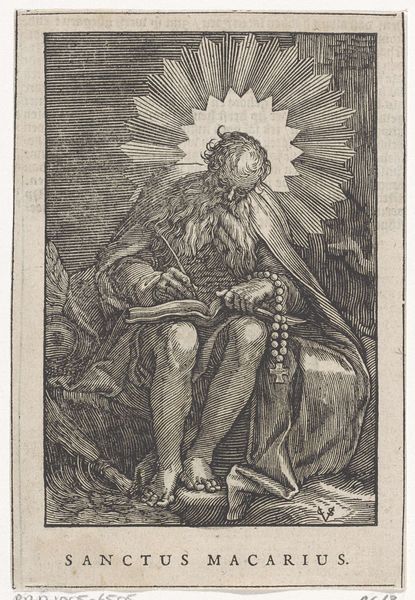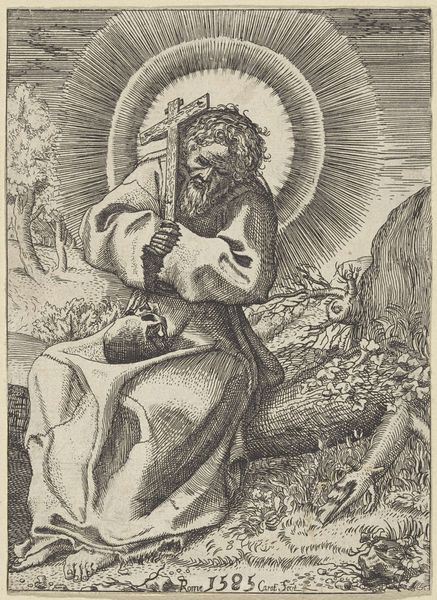
print, engraving
#
portrait
#
baroque
# print
#
old engraving style
#
figuration
#
history-painting
#
engraving
Dimensions: height 151 mm, width 104 mm
Copyright: Rijks Museum: Open Domain
Curator: Christoffel van Sichem the Younger created this engraving, titled "Heilige Paulus van Thebe als kluizenaar," in 1644. Editor: Gosh, it’s kind of… intense, isn’t it? Stark. Makes you wonder about the mindset needed to carve this level of detail out of seemingly nothing. Curator: The texture is indeed remarkable. Observe the hatching and cross-hatching, creating a chiaroscuro effect that defines the musculature and drapery. Semiotically, the lines denote both form and shadow, structuring our understanding of space. Editor: And symbolically? I mean, this is a hermit in the desert being brought food by a bird! What a gig. Talk about living on faith, huh? It feels strangely empowering. Like you could just walk away from everything, get yourself a cave, and wait for the ravens to deliver take-out. Curator: The narrative presents Saint Paul as a figure of pious solitude. The eagle delivering bread functions as an explicit signifier of divine providence and sustenance in his ascetic existence. Editor: Ascetic. That's the word. Makes me want to run into the wilderness, chop wood, carry water. Seriously though, the sheer labor that went into producing this print, it’s almost devotional in itself, a kind of active meditation for van Sichem. I get the sense it demanded tremendous control and a single-minded vision. Curator: Yes, it’s undeniable that the baroque style permeates not just its subject matter but also the medium itself. The calculated arrangement of tonal values gives way to its underlying religious agenda through expert deployment of contrasting light and shade, thereby instilling veneration. Editor: And while its technical execution is top-notch, its ultimate meaning can also transcend the image. What stays with me isn’t so much the theology of its period as the invitation that comes alive as it is viewed from centuries apart. Curator: A fine concluding sentiment to note, which balances the dialectic form/content with emotive agency. Thank you.
Comments
No comments
Be the first to comment and join the conversation on the ultimate creative platform.
